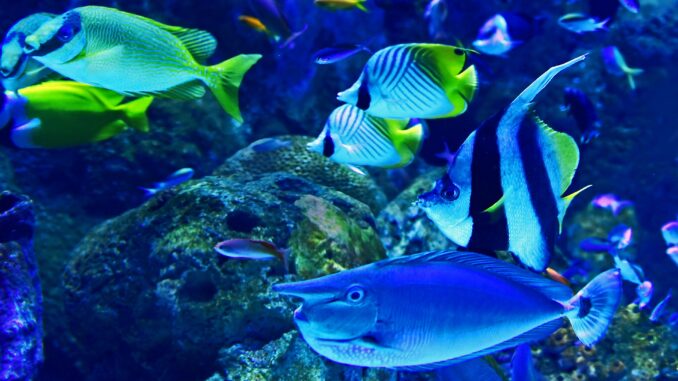
When setting up an aquarium, one of the essential components to consider is the filtration system. Filters play a crucial role in maintaining the water quality and ensuring a healthy environment for your aquatic inhabitants. The common argument for filtration systems in aquariums is internal filter vs external filter. Each type has its advantages and disadvantages, and understanding the differences between them can help you make an informed decision based on your specific needs and preferences.
Internal Filter
Internal filters, as the name suggests, are placed inside the aquarium and submerged in the water. They consist of a pump that draws water through a filter media to remove debris, waste, and other impurities. Internal filters are commonly used in smaller aquariums or tanks with limited space, as they do not require an external plumbing system. These filters are compact, easy to install, and are typically more budget-friendly compared to external filters.
Pros of Internal Filters:
- Space-Saving: Internal filters take up minimal space inside the aquarium, making them ideal for smaller tanks or setups with limited room.
- Easy Installation: Internal filters are simple to install and typically come with suction cups or mounting brackets for securing them in place.
- Cost-Effective: Internal filters are generally more affordable than external filters, making them a budget-friendly option for beginners or hobbyists on a tight budget.
Cons of Internal Filters:
- Limited Filtration Capacity: Internal filters may not be as powerful or efficient as external filters, especially in larger aquariums with heavier bioloads.
- Visible Within the Tank: Some aquarists prefer a cleaner look without equipment inside the tank, which may be challenging with internal filters.
External Filter
External filters, also known as canister filters, are situated outside the aquarium and connected to the tank via tubing. These filters typically consist of multiple compartments filled with various types of filter media for mechanical, biological, and chemical filtration. External filters are often preferred for larger aquariums or systems that require higher filtration capacity and customizable filter media options.
Pros of External Filters:
- High Filtration Capacity: External filters are capable of handling larger volumes of water and provide more extensive filtration options, making them suitable for tanks with heavy bioloads.
- Customizable Filtration: External filters allow for customization of filter media types and arrangements based on specific filtration needs, such as biological, mechanical, or chemical filtration.
- Aesthetic Appeal: By placing the filter outside the aquarium, the interior of the tank remains clutter-free, providing a cleaner and more aesthetically pleasing look.
Cons of External Filters:
- Higher Cost: External filters tend to be more expensive than internal filters due to their larger size, higher capacity, and advanced filtration capabilities.
- Requires Additional Space: Setting up an external filter requires additional space outside the aquarium for housing the filter unit and connecting tubing.
Choosing the Right Filter for Your Aquarium
When selecting between internal filter vs external filter. for your aquarium, consider factors such as tank size, bioload, available space, and budget. Internal filters are suitable for smaller tanks or setups with limited space and a lower bioload, while external filters are better suited for larger tanks with heavier bioloads and advanced filtration requirements.
Ultimately, both internal and external filters play a vital role in maintaining a healthy aquatic environment by removing waste, toxins, and impurities from the water. By understanding the differences between internal filter vs external filter and evaluating your specific needs, you can choose the filtration system that best fits your aquarium setup and provides optimal water quality for your aquatic inhabitants.
In conclusion, the choice between internal filter vs external filter in your aquarium comes down to personal preference, tank size, and filtration requirements. Regardless of which type you choose, regular maintenance and monitoring of water parameters are essential to ensure a clean and healthy environment for your fish, plants, and other aquatic life.
Leave a Reply
You must be logged in to post a comment.